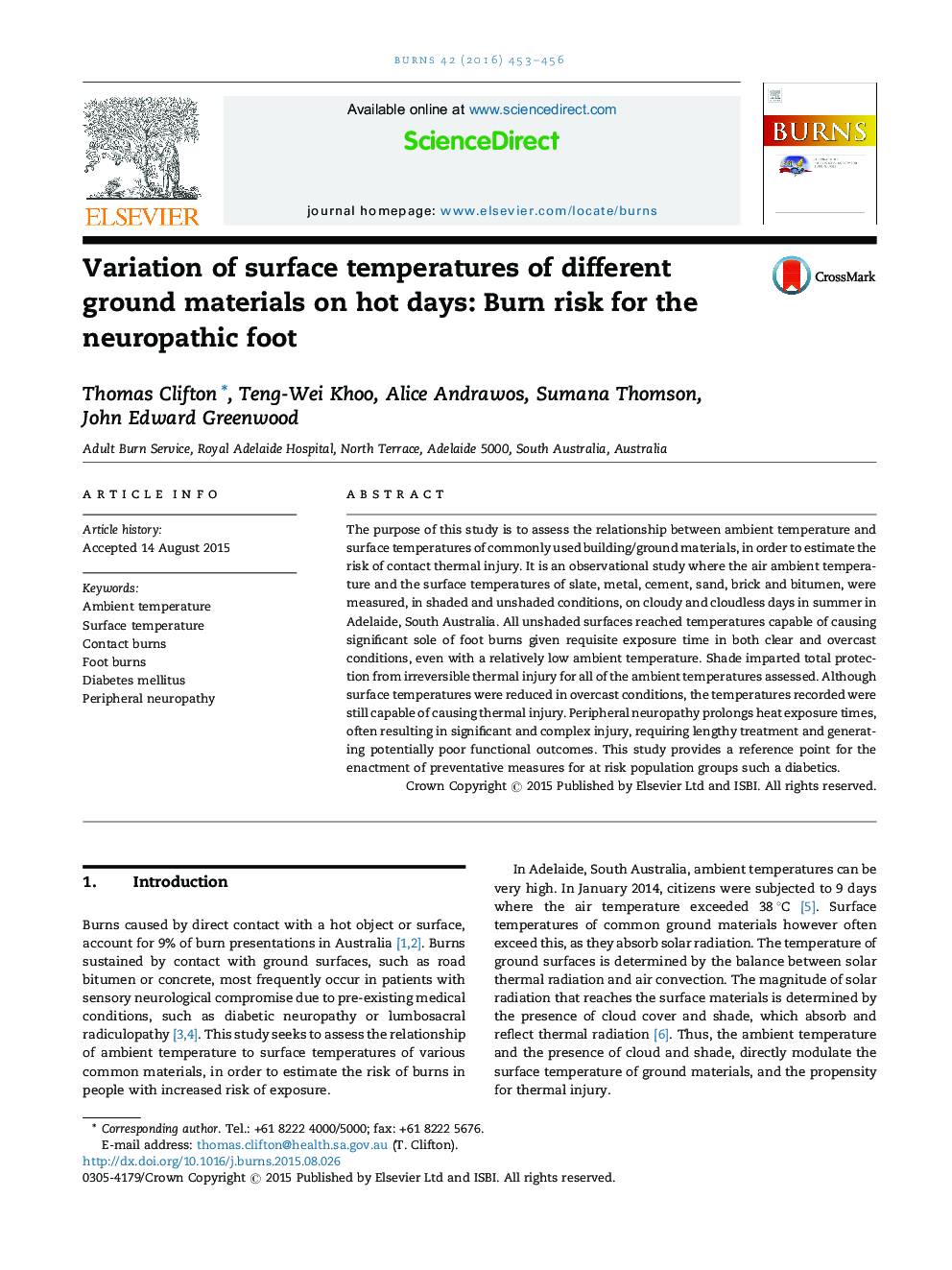| Article ID | Journal | Published Year | Pages | File Type |
|---|---|---|---|---|
| 3104055 | Burns | 2016 | 4 Pages |
•All unshaded surfaces were capable of causing burns for all ambient temperatures.•Shade imparted total protection from contact burns for all ambient temperatures.•Overcast conditions were not protective from surface temperatures contact burns.
The purpose of this study is to assess the relationship between ambient temperature and surface temperatures of commonly used building/ground materials, in order to estimate the risk of contact thermal injury. It is an observational study where the air ambient temperature and the surface temperatures of slate, metal, cement, sand, brick and bitumen, were measured, in shaded and unshaded conditions, on cloudy and cloudless days in summer in Adelaide, South Australia. All unshaded surfaces reached temperatures capable of causing significant sole of foot burns given requisite exposure time in both clear and overcast conditions, even with a relatively low ambient temperature. Shade imparted total protection from irreversible thermal injury for all of the ambient temperatures assessed. Although surface temperatures were reduced in overcast conditions, the temperatures recorded were still capable of causing thermal injury. Peripheral neuropathy prolongs heat exposure times, often resulting in significant and complex injury, requiring lengthy treatment and generating potentially poor functional outcomes. This study provides a reference point for the enactment of preventative measures for at risk population groups such a diabetics.
